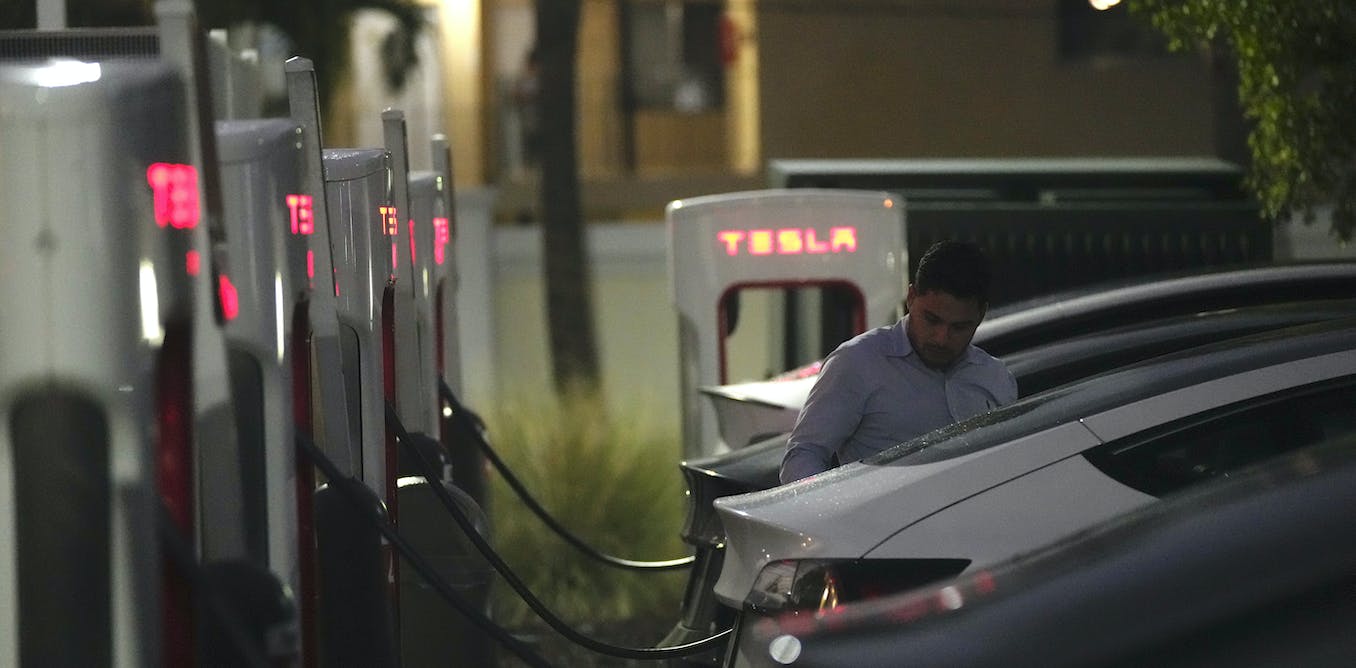Canada is on the road to transformation in mobility. The federal government recently announced its zero-emission vehicle sales target, which requires all light-duty passenger vehicles sold by 2035 to be zero-emission.
Battery electric vehicles (EVs) are likely to make up the majority of these sales. This means that hundreds of thousands of EV charging points need to be installed in homes, workplaces, retail spaces and along highway corridors in the coming years.
Most EV charging occurs at home and 85 per cent of current EV owners in Canada live in single-family residences with dedicated parking. The demand for EVs among apartment and condo dwellers has been limited, given the challenges associated with installing EV charging points in multi-unit residential buildings (MURBs).
But how can Canadians living in these buildings participate in an electric future? How can governments facilitate their inclusion? A recent report from the CSA Public Policy Centre, where I hold an executive position, proposes a number of policy considerations for governments to deploy EV charging infrastructure equitably, incorporate accessible design practices, ensure reliability and promote inclusive payment options.
Barriers to EV-equipped MURBs
Property owners face a long list of barriers to installing charging points in multi-unit residential buildings, including technical, financial and regulatory issues.
While new buildings are increasingly designed with EV-ready parking spaces that are equipped with sufficient electrical capacity and infrastructure required to install charging points, it is particularly challenging to adapt existing buildings.
If a MURB has a parking area, electricity may be bulk-metered (i.e., shared equally among occupants), individually metered but not connected to parking spaces, or the parking spaces may not be “EV-ready.” When retrofits are required, they can be complex and costly.
In some condominiums, rules require a minimum number of members to approve the installation of EV charging, and rental housing landlords can be reluctant to invest in long-term EV infrastructure when tenancy is short-term.
As a result, property owners have been slow to pursue EV charging projects. And when they do, they are more likely to make incremental changes like installing EV charging in one parking space at a time rather than comprehensive retrofits. Not only is this more expensive, but buildings with limited electrical capacity will direct that capacity to early adopters, who tend to be higher-income earners, at the expense of occupants who will need access later.
This raises real concerns around equity. Multi-unit residential building residents, particularly renters in older apartment buildings, are more likely to be low-income, racialized and immigrant individuals and families. While EV ownership rates are low among these groups currently, they will need charging access as EV adoption accelerates.
However, tenants also face an unequal power dynamic when requesting EV charging access from a landlord. If upgrades are pursued, the costs may be passed on to tenants, which disproportionately burdens those on the lower end of the income scale.
Inclusive and equitable low-carbon transportation
Federal, provincial and municipal governments are showing considerable commitment to decarbonizing the transportation sector, specifically when it comes to deploying EV charging infrastructure. These commitments must prioritize equity to ensure that no one is left behind in the low-carbon transition.
Fortunately, policymakers have many of the tools available to them and can learn from leading jurisdictions.
British Columbia’s EV charger retrofit program provides funding for comprehensive retrofits from the earliest stages, including rebates to cover the costs associated with developing an EV-ready plan, electrical infrastructure to implement the plan and the purchase and installation of individual charging points.
Adoption of a similar approach in the current federal funding program could improve program uptake among MURB property owners, thereby removing a key barrier to EV adoption for MURB residents. In areas that have a density of multi-unit residential areas with limited charging access, installation of publicly accessible fast-charging infrastructure should be prioritized.
Further, government programs should earmark dedicated funds for underserved communities. The federal government can also play a leadership role in promoting nationwide EV charging access in new buildings by adopting “EV-ready” requirements into its national model codes such as the National Building Code or the National Energy Code, which can be voluntarily adopted by provincial governments either in whole or in part.
By learning from other jurisdictions and making purposeful investments, Canada can make an inclusive and equitable transition to low-carbon transportation possible.




